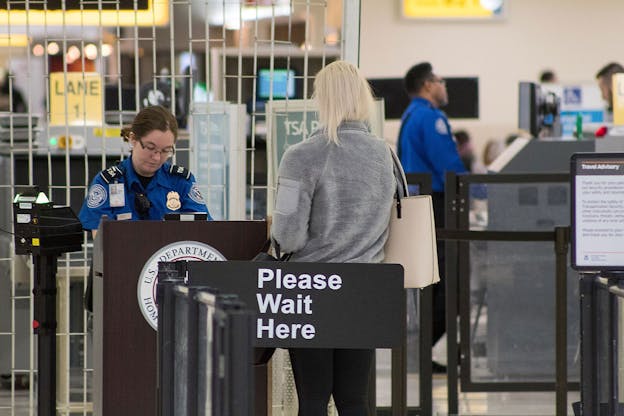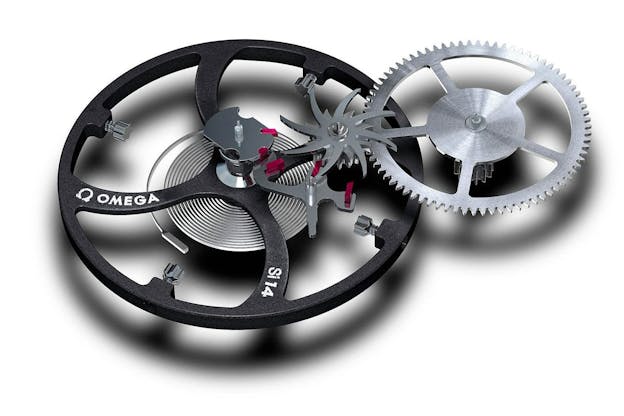Can Your Watch Be Damaged By Airport Security Scanners?
Millions of watches go through airport security every year. Just how safe are mechanical watches going through checkpoints?
Going through an airport security scanner is one of the most common experiences in the world, and yet, it is surprisingly difficult to find any sort of definitive answer as to whether or not modern scanning technology can harm your wristwatch. Just in the USA alone, the Transportation Safety Administration (TSA) screens over 750 million passengers per year, an unknown number of which are wearing watches – although I think it’s safe to assume that the number is in the millions as well.
The Federation of the Swiss Watch Industry FH says that taken together, the world’s main exporters of watches – China, Hong Kong, the USA, Germany, and Switzerland – exported 675 million or so watches last year, and when you include over 40 million exported from Japan, you can see that things really add up. Of those hundreds of millions of watches, some of them have got to be going through airport security scanners – but are mechanical watches really safe from their effects?

Different scanners use different types of technology and different parts of the electromagnetic spectrum. The first point to bear in mind is that most types of electromagnetic radiation, which include radio waves, microwaves, visible light, and “hard” radiation like gamma and x-rays, don’t affect mechanical watches at all; the real culprit is usually magnetic fields. The two questions then are, do any scanners use magnetic fields to scan for suspicious objects, and if so, are the magnetic fields in question strong enough to affect a modern watch?
Millimeter Wave Body Scanners And X-Ray Machines
In the United States, there are two basic types of scanning devices. One type are the x-ray machines through which hand luggage, shoes, and other personal items pass when you go through security. The other are the full body scanners you have to stand in briefly, after taking off your jacket, belt and shoes and emptying your pockets. (Some people stand in them barefoot, which seems unhygienic).
The x-ray machines are perfectly safe for mechanical watches – x-rays are not magnetic and they don’t generate magnetic fields. Magnetic fields can be produced by moving electrical charges – the current moving through the coils of an electric motor are a very common example – or by permanent magnets, of the type found in medical MRI machines, but also in laptop lids, magnetic clasps for purses and cellphone cases, and so on. Airport x-ray machines, like any other x-ray machine, work by interacting with materials of different densities (you can use them to see bones inside the human body because bone is denser than the overlying tissue). They don’t generate magnetic fields when they interact with any material, though – and they can’t be affected by magnetic fields, either.

The second type of scanner is the one you stand in – these use millimeter wave microwaves, which can pass through a single layer of clothing and “see” what’s underneath. Nowadays, these scanners don’t show your actual body – instead, if they scan something potentially suspicious, the area is highlighted on the TSA agent’s monitor on a generic stick figure and at that point you may be asked if you took everything out of your pockets, or you might have a hand-held metal detector waved over the area in question, or you might get a pat-down. TSA’s FAQ says, “Millimeter wave imaging technology uses harmless electromagnetic waves to detect potential threats, which are highlighted on a generic outline of a person appearing on a monitor attached to the unit. If there isn’t an alarm, an ‘OK’ appears on the screen with no outline.”

Like x-ray machines, millimeter wave scanners don’t use or produce magnetic fields, so they can’t affect a mechanical watch. Neither x-ray machines nor millimeter wave scanners can affect quartz watches either. Parts of the machinery might generate weak magnetic fields but since magnetic field strength falls off quickly with distance, these won’t be anywhere near strong enough to affect your watch, any more than the magnets holding your laptop lid in place will affect your watch when you’re typing.
Walk-Through And Wand-Type Metal Detectors
Another type of scanner you might encounter, however, are walk-through or hand held metal detectors. These do generate magnetic fields however, the fields in question are too weak to affect modern watches with Nivarox-type balance springs. A 2003 study from the journal Health Physics, and archived at the National Library of Medicine, gives the magnetic fields generated by walk-through scanners as “up to 299 A/m [amperes per meter]” and 6 A/m for hand held, wand-type detectors. Modern Nivarox alloy balance springs are compliant with the standard for non-magnetic watches, ISO 764, which specifies that for a watch to be “anti-magnetic” it must run with no more than a ± 30 second daily deviation in rate, after exposure to a magnetic field of 4800 A/m, which is orders of magnitude stronger than anything a watch will be exposed to at airport security. And of course, if your watch has a silicon balance spring, magnetic contamination is a complete non-issue – any Master Chronometer rated watch, for instance, is unaffected by magnetic fields thousands of times stronger than anything you’ll encounter at an airport.

Oddly enough, I have been unable to find any specific recommendation from TSA on wearing a watch through airport security, and I’ve been told, although not with any regularity, that I can wear my watch through the body scanner. Usually if I’m wearing a watch, I’ll just take it off while waiting to get to the checkpoint, and put it in a jacket pocket. Given the fact that hundreds of millions of people go through airport security scanners every year, and the likelihood that millions of them are wearing watches that either go through millimeter wave body scanners or x ray scanners, it seems likely that if such machines could generate magnetic fields powerful enough to magnetize a watch, it would be common knowledge.

Still, it seems weird that TSA wouldn’t have an official recommendation for such a common situation (and common question). They have official recommendations for film, after all, so it can’t be some sort of institutional hostility to outmoded technologies.
It might be that the risk is so low as to be nonexistent and therefore, it’s unnecessary to address, but sent a DM to TSA on Facebook Messenger (one of their approved venues for taking questions from an anxious public) and got back a rather generic reply saying that “bulky jewelry” which, god knows, covers a lot of mechanical watches, should be removed; TSA says, “To avoid leaving personal items behind, we recommend passengers place belongings in their carry-on bags before entering the checkpoint,” but the recommendation seems to have more to do with avoiding losing something than anything else. Some discretion in the matter seems to be left to the checkpoint agents; since there is such a huge range of possible types of jewelry (and let’s face it, as far as TSA is concerned, that’s exactly what your luxury watch is) any specific recommendations wouldn’t cover all possible cases anyway.
I’d be a lot more worried about having a watch stolen than magnetized. The latter seems to be a non-problem. The former is potentially a much bigger problem and there, as in so many departments of modern life, discretion is the better part of valor.
FAQs
Can I wear my mechanical watch through airport security?
Yes, mechanical watches are generally safe to wear through airport security. X-ray machines and millimeter wave scanners do not use magnetic fields and will not affect your watch. Metal detectors produce weak magnetic fields, but they are not strong enough to affect modern mechanical watches.
Do airport x-ray scanners affect mechanical or automatic watches?
No. Airport x-ray scanners detect objects based on density and do not generate magnetic fields. They are completely safe for both mechanical and automatic watches.
Can airport metal detectors magnetize a watch?
Airport metal detectors do generate magnetic fields, but the strength is very low. These levels are far below what would be required to magnetize a modern watch, especially those with Nivarox-type balance springs or silicon components.
Do I need to remove my watch before going through TSA security?
There is no consistent TSA rule requiring watch removal. Some agents may ask you to remove your watch—especially if it’s considered bulky jewelry—but often it’s left to your discretion. Many travelers place their watch in a jacket pocket or carry-on for safety and convenience.
Are luxury watches like Rolex safe from airport scanners?
Yes. Airport scanners, including x-ray and millimeter wave machines, do not produce magnetic fields strong enough to affect luxury watches. Timepieces rated as Master Chronometers or certified under ISO 764 are especially resistant to magnetic interference.

